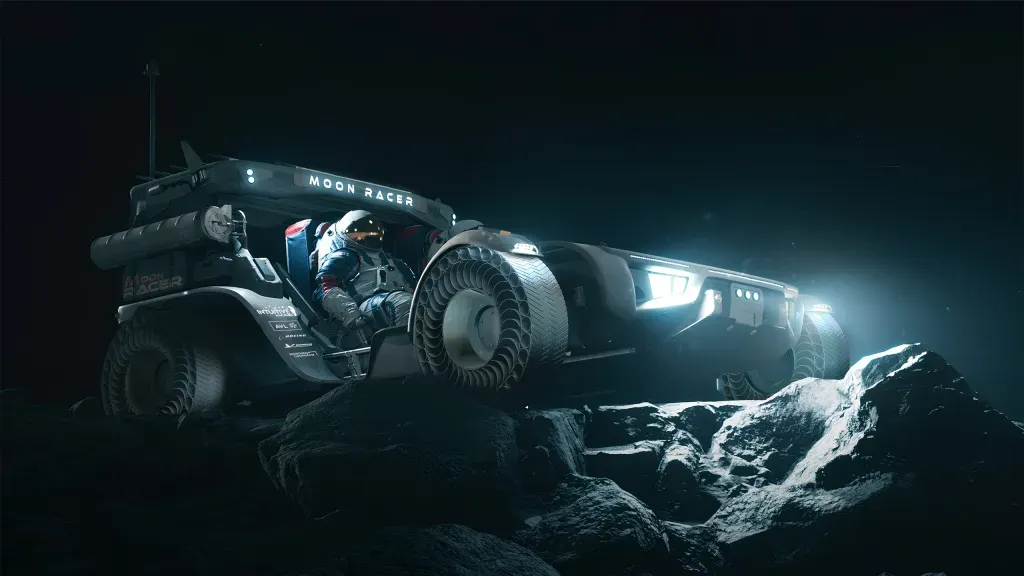How Is Tech Changing Space Exploration?

Three space companies, Intuitive Machines, Lunar Outpost, and Venturi Astrolab, have been chosen by NASA to design a moon buggy. Only one design will be selected for use on the lunar surface. These vehicles will help astronauts explore and conduct missions on the moon.
The chosen teams will undergo a 12-month feasibility phase, followed by a competitive request for proposals. NASA will then select the final awardee to be responsible for designing, launching, and landing the lunar terrain vehicle (LTV) before the Artemis V mission in 2029.
These awards are a significant milestone in NASA’s Artemis programme, which aims to establish a sustained human presence on the moon. The LTVs are essential for moon exploration as they are specified to be equipped to carry two astronauts, withstand the harsh lunar environment and aid in scientific research. This project will expand human exploration of the moon’s surface beyond foot travel.
The History Of Space Tech
Technological advancements have greatly aided space exploration since the Soviet Union’s launch of Sputnik 1 in 1957. Initially, satellites like Sputnik 1 were crucial for studying the ionosphere and collecting data using radio signals.
Human spaceflight further advanced with Vostok 1 in 1961, where automatic systems and ground control were utilised due to uncertainties about human reactions to weightlessness. This paved the way for manned missions like Apollo 11, where Neil Armstrong became the first person to walk on the Moon in 1969.
Robotic missions also played a significant role, such as Luna 2’s impact on the Moon in 1959 and Lunokhod 1, the first robotic lunar rover, in 1970. These missions expanded our understanding of space and celestial bodies.
Interplanetary exploration saw breakthroughs with missions like Voyager 1, which ventured beyond the Solar System in 2012, providing valuable data from interstellar space. These technological advancements have propelled humanity’s space exploration, pushing the boundaries of what we know and expanding our reach into the cosmos.
How Does Technology Promote Space Exploration?
Space exploration has transformed dramatically thanks to continuous technological advancements. Various aspects of space missions have been impacted, allowing us to move beyond what we ever thought possible.
More from Tech
Propulsion Systems
Propulsion systems have evolved, with traditional chemical rockets being replaced by more efficient options like ion propulsion. This allows for missions like NASA’s Dawn to explore multiple objects in the asteroid belt without excessive fuel use.
Satellite Technology
Satellite technology has also seen progress through miniaturisation, giving rise to CubeSats. These smaller and more cost-effective satellites enable diverse scientific research and data collection missions. Communication systems have vastly improved, facilitating clearer signals and enhanced data transmission between spacecraft and Earth.
Robotics
Robotic systems have become increasingly sophisticated, enabling remote control of tasks like those performed by Mars rovers. These rovers conduct scientific experiments, cover challenging terrains, and collect samples, demonstrating the advancements in robotics and automation in space exploration.
Data Instruments
Sensing and imaging instruments have become more precise and versatile, aiding in the search for signs of life or valuable resources. Additionally, the vast amount of data generated by space missions is now analysed using advanced analytics and machine learning algorithms, leading to quicker and more accurate interpretations.
Rocket Technology
The introduction of reusable rocket components by companies like SpaceX has revolutionised space exploration by reducing costs. Reusing rocket stages lessens financial barriers and opens up opportunities for both scientific research and commercial space activities.
The field of space exploration is being constantly shaped by technological advancements, which have paved the way for exciting new missions. From propulsion systems and satellite technology to robotics and data instruments, these innovations have enabled us to explore deeper into the cosmos. With projects such as NASA’s Artemis programme and the development of reusable rocket technology, humanity’s presence in space is expected to grow, leading to a greater understanding and exploration of the universe.


 United Kingdom
United Kingdom Argentina
Argentina  Australia
Australia  Austria
Austria  Brazil
Brazil  Canada
Canada  Germany
Germany  Ireland
Ireland  Italy
Italy  Malaysia
Malaysia  Mexico
Mexico  New Zealand
New Zealand  Poland
Poland  South Africa
South Africa  United States
United States 























